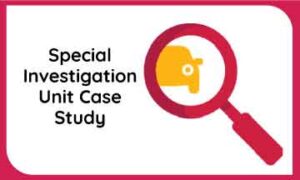Insurance fraud accounts for roughly 10% of all property and casualty insurance losses in the United States each year, according to the National Association of Insurance Commissioners (NAIC, 2024). It remains one of the most widespread financial crimes, affecting nearly every type of policyholder and often going undetected without detailed investigation. From exaggerated accident claims to false theft reports, these schemes drive costs for consumers up and undermine the trust between insurance companies and their customers. For organizations like Maryland Auto Insurance, identifying and addressing fraudulent activity is essential to protecting both honest policyholders and company resources.
Recently, Maryland Auto investigated a theft claim in which a policyholder reported that her 2019 Toyota was stolen in Washington, D.C. on August 24, 2025.
Maryland Auto’s investigator conducted an initial review of the claim. As part of the review, several database checks were completed, including a vehicle sightings search of the policyholder’s vehicle. The last recorded sighting showed the vehicle in Washington, D.C. one day after the reported theft.
That morning, team members traveled to the area and located the policyholder’s vehicle parked on a city street. They promptly notified the Metropolitan Police Department (MPD), and the MPD dispatcher confirmed that the recovery location was near where the theft had been reported.
The team contacted the policyholder to inform her that the vehicle had been found. She asked if she could come retrieve it herself. She was advised that the decision would rest with the responding MPD representative, who had not yet arrived. The policyholder was then asked about the circumstances of the theft. She stated that she had gone into a bank for three minutes and, upon return, discovered the vehicle was gone. She admitted that the vehicle had been left running with the window halfway down.
The investigator inspected the recovered vehicle. The doors were locked, the ignition was intact, and there was no apparent damage other than a few dents on the rear liftgate. When an MPD official arrived, the team informed them that the policyholder wanted to pick up the vehicle rather than have it towed. The official agreed and said he would contact her to confirm.
Shortly afterward, the policyholder called the investigator again to say that while the officer was waiting for her at the scene, the suspect who had originally taken the vehicle returned, entered it, and drove off again. The MPD contact explained that officers are not permitted to pursue stolen vehicles, so no chase was initiated.
The team continued to monitor the vehicle via sightings databases and D.C. parking ticket searches while remaining in contact with the policyholder. Over the next several days, the vehicle received three separate parking tickets and was spotted again in the city.
On September 5, 2025, the policyholder texted the investigator stating that MPD had recovered the vehicle. This time, the vehicle had sustained damage.
The investigation revealed that the policyholder retained an extra key to the vehicle. The decision to personally retrieve the vehicle, rather than having it towed, ultimately resulted in the second theft. Although her decision may have seemed reasonable due to her long commute from Germantown during rush hour, the investigator concluded that having the vehicle towed would likely have prevented the second theft.
Thanks to the diligent monitoring and follow-up by Maryland Auto’s investigative unit, the vehicle was successfully recovered and repaired. Important lessons were also reinforced regarding safe vehicle recovery and policyholder decision-making. This case highlights the importance of never leaving a vehicle running while unattended, even for a brief moment.




